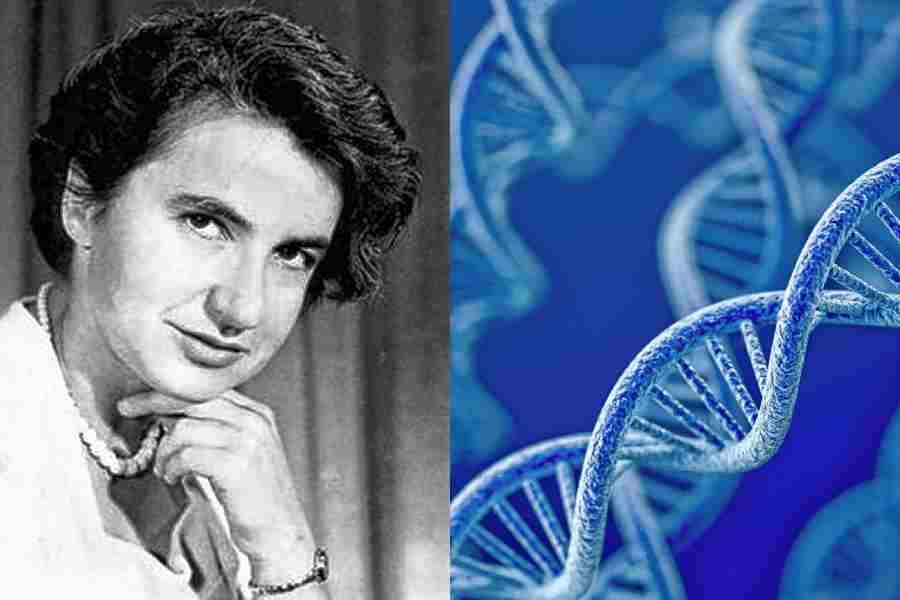On April 25, 1953, James Watson and Francis Crick published a landmark paper in Nature, proposing the double helix as the long elusive structure of DNA, a discovery that a decade later earned the men the Nobel Prize in physiology or medicine.
In the final paragraph of the paper, they acknowledged that they had been “stimulated by a knowledge of the general nature of the unpublished experimental results and ideas” of two scientists at King’s College London, Maurice Wilkins and Rosalind Franklin.
In the 70 years since, a less flattering story has emerged, thanks in large part to Watson’s bestsell-ing book The Double Helix. In the book, he not only wrote disparagingly of Franklin, whom he called Rosy, but said he and Crick had used her data without her knowledge.
“Rosy, of course, did not directly give us her data,” Watson wrote. “For that matter, no one at King’s realised they were inour hands.”
This account became a parable of poor scientific behaviour, leading to a backlash against Watson and Crick and turning Franklin into a feminist icon. It also set off a long-running debate among historians: precisely what role did Franklin play in the discovery of the double helix, and to what extent was she wronged?
In a new opinion essay, published in Nature, two scholars argue that what transpired “was less malicious than is widely assumed”. The scholars,Matthew Cobb, a zoologist and historian at the Uni-versity of Manchester, US, who is writing a biography of Crick, and Nathaniel Comfort, a historian of medicine at Johns Hopkins University, US, who is writing a biography of Watson, draw upon two previously overlooked documents in Franklin’s archive.
These documents, they say, suggest that Franklin knew that Watson and Crick had access to her data and that she and Wilkins collaborated with them. “We should be thinking of Rosalind Franklin, not as the victim of DNA, but as an equal contributor and collaborator to the structure,” Comfort said.
Other experts said the new documents were interesting but did not radically change the narrative; it has long been clear that Franklin played a key role in the discovery. “What this does is add a little new evidence to a trail, which leads directly to Franklin’s being a major participant,” said David Oshinsky, a historian of medicine at New York University, US.
In the early 1950s, Watson and Crick were working together at the Univer-sity of Cambridge, in Britain, trying to piece together the structure of DNA, largely by building models ofthe molecule.
At nearby King’s College London, Franklin and Wilkins were trying to solve the same puzzle experimentally, using X-rays to create images of DNA.
In The Double Helix, Watson suggested that his breakthrough came after Wilkins showed him one of Franklin’s images, known as Photograph 51. “The instant I saw the picture my mouth fell open and my pulse began to race,” Watson wrote.
That book was published in 1968, a decade after Franklin died of ovarian cancer, at age 37, and it became the prevailing narrative of the discovery. But the real story was more complex.
In December 1952, Crick’s supervisor, molecular biologist Max Perutz, received a report on Franklin’s unpublished results during an official visit to King’s College. Perutz later gave this report to Crick and Watson.
This data proved more useful to the pair than Photograph 51, said Cobb and Comfort, who found a letter that implies Franklin knew her results had made their way to Cambridge.
In the letter, which was written in January 1953, Pauline Cowan, a scientist at King’s College, invited Crick to an upcoming talk by Franklin and her student. But, Cowan wrote, Franklin and her student said Perutz “already knows more about it than they are likely to get across so you may not think it worthwhile coming.”
That letter “strongly suggests” that Franklin knew the Cambridge researchers had access to her data and that she “doesn’t seem to have minded”, Cobb said.
Elspeth Garman, a molecular biophysicist at the University of Oxford, UK, said she agreed with Comfort and Cobb’s conclusion, saying, “They got right that she was afull participant.”
But Perutz’s sharing of Franklin’s unpublished data is “slightly iffy”, she said. (In 1969, Perutz wrote that the report was notconfidential but that he should have asked forpermission to share it “as a matter of courtesy”.)
Still, other scientists and historians said they were puzzled by the arguments made in the Nature essay. Helen Berman, a structural biologist at Rutgers University, US, called them “sortof strange”. Of Franklin, she said, “If she was an equal member, then I don’t know that she was treated very well.”
Franklin and Wilkins each published their own results in the same issue of Nature that included Watson and Crick’s report, as part of a package of papers. But Berman wondered why the scientists did not collaborate on a single paper with shared authorship. And several scholars said they thought the new essay minimised the wrongdoing by the Cambridge team.
Comfort said he and Cobb were not “trying to exonerate” Watson and Crick, whom he said were “slow to fully acknowledge” Franklin’s contribution. Cobb said the Cambridge scientists should have told Franklin that they were using her data. “They were ungallant,” he said. “They were not as open as they should have been.” But, he added, it wasn’t “theft”.
NYTNS










